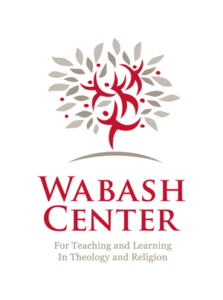vocation of teaching
Select an item by clicking its checkbox
Editor’s note: Today’s blog is Roger’s final individual entry for this year of Stories from the Front of the Classroom. Look for our final collaborative post on Tuesday May 19. As my yearlong sabbatical in Korea comes to a conclusion, I have been thinking about the multiple seasons ...
This is a post about that time I taught a semester-long class on a topic about which I knew almost nothing… or perhaps I should say “the most recent time.” This was no one’s fault but my own. I work at a college that has no requirement for students ...
Kate Blanchard Last Monday I wore a suit to work, an occurrence rare enough that my students felt led to comment upon it. “You look so nice today!” exclaimed one, to which another quickly retorted, “That makes it sound like she doesn’t usually look nice!” A couple of others ...
I’m a bit annoyed at the professorial mantra of “teaching, scholarship, and service.” I understand that categories are needed for the various steps of promotion, but I think that this grouping unnecessarily promotes an adversarial relationship between “teaching and scholarship.” The pairing feels analogous to such opposites as “Democrats ...

Developing Critical Professional Practice in Education
Date Reviewed: March 15, 2015
...
The authors of this volume are intent on promoting the advancement of critical professional development in higher education. They seek to accomplish this by highlighting existing practices and proposing a new model of professional development that is “critical, pragmatic, informed, and flexible” (2). The merits of this new model are said to be its nuance and its attention to the complex and constantly changing landscape of education, particularly higher education.
The volume is divided into three parts. Part One focuses on what it means to be a professional, how this term is shaped, and how the discussion surfaces in education. The authors introduce critical professional development as the places where individual growth is shown as a collaboration of individual activity, policy, and institutional and organizational reforms. In support of this model, they advocate the establishment of institutional learning spaces and support structures to achieve their goal.
Part Two explores the model’s validity through four case studies. In this section Lynne Barnes and Christine Hough join Appleby and Pilkington in providing examples of the proposed model to enhance teaching and other professional practices. Barnes discusses a training program for deaf teachers, Pilkington explores a framework for professional development, Hough describes her experience in engendering critical thinking in higher education underclassmen, and Appleby discusses her use of writing for professional development. Part Three reflects on these case studies and how they relate to the proposed model. This section also provides recommendations for the implementation of the model and its practice in various organizations.
The exploration of professionalism in Part One is dense and jargon heavy, but in this case it is a welcome exception as much of the literature on teaching and learning is filled with clichés and buzz words. The text as a whole is starkly realistic, scholarly, and pragmatic rather than idealistic. As the authors concede, the definition of critical professionalism does not contain any original components; however, it is original in its holistic and practical conceptualization of professionalism in higher education. One limit to the text’s usefulness might be its aim to address both institutional and individual practices. It seems better suited for implementation at an institutional level. Individuals without institutional influence might struggle to implement the model.
The text succeeds in providing a model that is not limited by discipline. It provides such a variety of “structures and spaces” (63) that anyone could achieve some benefit from reading the book, while a full implementation of this critical professional practice may be limited. The theory proposed in this volume has wide applicability, and is worthwhile in the fields of theology and religion. Hough’s case study was particularly insightful for those teaching theology and religion. In addition, the entire buffet of professional practices recommended in this text may not be accessible to every reader, but there is certain to be something here for the entire range of practitioners in higher education.


